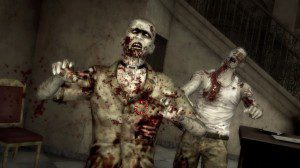With every paranormal or mythological creature, there is a plausible back story that can explain the origins of the creature. So, let us take a moment or two to explore some popular creatures found in today’s culture and media.
Today, the term “vampire”, as portrayed by Robert Pattison in Twilight, refers to men glistening in the sunlight or, as portrayed in Interview With The Vampire, creatures who attack men and women to suck their victims’ blood. However, in the literal sense, a vampire is anyone who consumes human flesh and blood. The beliefs of vampirism were created to explain the killings of men and women who had been the victims of cannibalism. And, in an attempt to deny the presence of serial killers feeding on their victims, vampirism was born.

Equally as popular are werewolves. The accepted meaning for the term “werewolf” is any man or woman who shape-shifts into a wolf at full moon. However, it is believed by many scholars that the idea of a werewolf was created to explain the happenings of serial killers and their practices such as cannibalism, mutilation, and cyclic attacks. Wolves, being a feared species, were believed to be evil in Europe, and thus, some believe it was inevitable they would be the victims of such a story.
So, with a plausible explanation for the origins of both vampires and werewolves, and the debunking of said creatures, surely, there must be an explanation for the myth that is a zombie?

In today’s society, zombies can be found in almost every outlet of the media. Video games such as the Left 4 Dead and Resident Evil franchises show zombies that are a direct result of a plague or disease. While the Call of Duty franchise, Red Dead Redemption, and Naughty Bear are utilising the popularity of zombies in after-market downloadable content, often showing men and animals who have become possessed after death. Although, lately, video games seem to be the go-to place for a zombie fix, they are not the root source for the increased popularity of these creatures in the media. Some may argue George A. Romero’s 1968 film, Night of the Living Dead, brought zombies into the limelight. Nowadays, zombies are found in other movies such as Resident Evil, Dawn of the Dead, and its parody – Shaun of the Dead.
Meanwhile, comics are experiencing an increase in demand, calling for books such as iZombie, the Crossed series, and The Walking Dead. The latter being responsible for the launch of the hit TV show of the same name.
But, where exactly did the story of this creature come from? Well, you will most likely not be surprised to hear that a zombie is defined as a man or woman who is the victim of zombification. However, you may be surprised to hear that zombification is as real as the air you’re breathing. Or, at least, it bares some merit.
If any of you have read Passage of Darkness: The Ethnobiology of a Haitian Zombie, you will understand, and, probably agree with its writer, Wade Davis, in his belief that zombies are real. Ethnobiology is defined by dictionary.com as “the scientific study of societal groups, especially for understanding the differences between ethnic groups and their relationship to the environment.”
In Passage of Darkness, Wade Davis explains zombies in Haiti, although few and far between, are, in fact, real. He claims zombification occurs when a man or woman is a victim of a poison, producing a near-death state. The victim is then revived and controlled by the person who provided the poison, thus, essentially becoming their slave. However, Davis states zombification is not a world-wide phenomenon, and instead, is a culturally induced state through the practice of Voodoo in Haiti. A Bizango, or Voodoo priest, would medically induce this state as a punishment for anyone they believed had seriously violated the law of the Bizango society.
Davis claims the poison, partially formed by tetrodotoxin, the toxin found in puffer fish, is the main ingredient to induce zombification. Tetrodotoxin, a powerful neurotoxin, has been proved to cause paralysis of the limbs followed by difficulty in walking. Next, the victim experiences difficulty speaking and mental impairment. Death usually follows. If you think back to the portrayal of zombies in today’s culture, the symptoms of tetrodotoxin poisoning sound eerily familiar!
So, how did the concept of a zombie evolve from Voodoo practices to the plagued creatures we see in society today?
As I’ve said before, I credit Night of the Living Dead with projecting zombies into the limelight. George A. Romero combined the behaviours of a vampire with that of a Voodoo zombie, to create the modern day ghouls we now call zombies. In Night of the Living Dead, a zombie was portrayed as a man whom had died and had their brain reanimated. These zombies fed off human flesh, with little to no brain function.
Although Night of the Living Dead was released in 1962, and credited with jump starting the zombie genre, it wasn’t until the 1990s, when Stephen King released several zombie-themed novels, that the zombie genre really took off. Most of said novels detailed townsfolk defending their loved ones from the classic outbreak of the dead becoming alive.
 Whereas the typical image of a zombie is that of a slow and sluggish person who’s brain has been brought back from the dead; not all subcultures follow that tradition.
Whereas the typical image of a zombie is that of a slow and sluggish person who’s brain has been brought back from the dead; not all subcultures follow that tradition.
The Resident Evil franchise details zombies that are a direct result of the T-Virus, a virus created by the Umbrella Corporation for testing on humans. 28 Days Later follows suit and shows a zombie outbreak as a result of a genetically modified virus.
When Night of the Living Dead was released, it was a movie often perceived as horrific and not suitable for children. In the 1990’s, with the release of several zombie genre books, the zombie culture began to increase popularity, however, still remaining taboo and, often, a frightening thought. Now, with nearly every major video game franchise incorporating zombies, many comics detailing zombie outbreaks and television shows surrounding zombies with unprecedented ratings, I wonder, just what is the driving force behind the increase in demand for zombies?
Marooners’ Rock has covered lots of zombie topics. So, if you’re still craving some zombie action, be sure to check out The Walking Dead – episodes 2, 3, 4, 5, and 6. Or, perhaps learn about some zombie ants, or read some reviews for Dead Rising 2, Plants vs. Zombies and Burn Zombie Burn, to name a few! Otherwise, leave a comment and let me know what you think about zombie and what you’ve learned!



